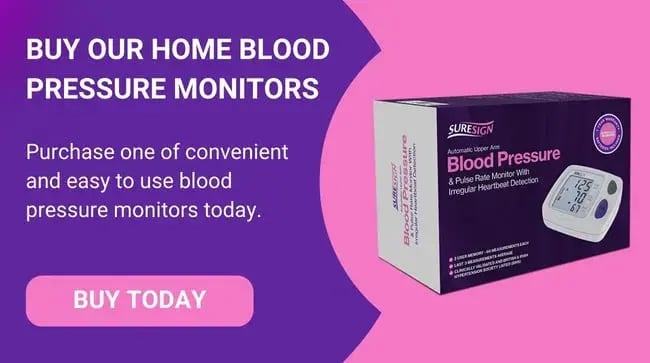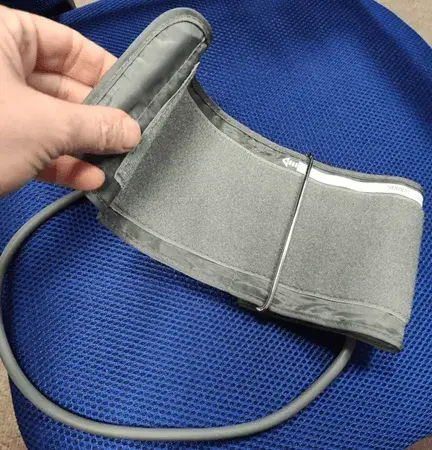How Blood Pressure Monitors Are Crucial For Monitoring Low Blood Pressure
Men over the age of 45 and women over 55 are taught to be aware of the dangers of high blood pressure (hypertension), which is known as a ‘silent killer’ due to the way it increases the risk of heart attacks and strokes. However, another common risk to cardiac health is low blood pressure (hypotension). This condition is less talked about than high blood pressure because it’s considered less dangerous to your health, but low blood pressure can cause you issues and can also be a sign of another underlying health condition.
A blood pressure monitor will help you monitor your blood pressure and take the relevant steps to keep it within a healthy range.
What Is Considered Low Blood Pressure?
A healthy blood pressure range is considered between 90/60 mmHg (millimetres of mercury) and 120/80 mmHg. Blood pressure is normally measured by a cuff that squeezes the upper arm – this can be done in clinic or at home using a blood pressure monitor. The first number indicates your blood pressure while your heart is pushing blood around your body, while the second number is the pressure in between heartbeats.
A reading above 140/90 mmHg is considered high blood pressure, and readings below 89/59 mmHg indicates low blood pressure.
Symptoms Of Low Blood Pressure
Many people with low blood pressure do not have any overt symptoms. However, the most common symptoms of low blood pressure are dizziness and fainting, which can increase your risk of injuries from slips and falls, and the symptoms can become worse during hot weather. In some cases, low blood pressure can also cause blurred vision, muscular weakness or fatigue, nausea, and difficulties in concentration.
Do I Have Low Blood Pressure?
The only way to be sure if you have low blood pressure is to test your blood pressure using a high-quality blood pressure monitor, or request a test from your GP. Some conditions and circumstances, however, put you at higher risk of having low blood pressure. For example, women who are pregnant often have low blood pressure, which isn’t usually a cause for concern. Low blood pressure can also be caused by dehydration, medical conditions such as cardiac arrhythmia, diabetes, and Parkinson’s Disease, and side effects from antidepressants and other medications.
Treatments For Low Blood Pressure
In most cases, simple lifestyle changes are an effective way of maintaining your blood pressure within the normal range, including keeping active to improve blood circulation, and drinking plenty of fluids. However, if you’re worried, please make an appointment to discuss your blood pressure with your GP – they may recommend changing or altering the dose of medication you are on, or investigate an underlying cause. In severe cases, and depending on the cause, low blood pressure can also be treated with fludrocortisone – a steroid that helps your kidneys to retain water and increase blood volume – or a beta agonist or alpha agonist to improve your cardiac health.
Next Steps
Our Suresign range includes an easy-to-use blood pressure monitor that allows patients to record and track their blood pressure without having to contact their GP. To find out about stocking our blood pressure monitors in your pharmacy, please contact one of our sales team today by clicking here.

Image Source: Canva
Posts by topics
- self-testing kits (31)
- Home Testing Kits (28)
- Pregnancy tests (15)
- Uti home test kits (11)
- Home Blood Pressure & Pulse Monitor (9)
- Pregnancy (8)
- Blood Pressure Monitors (7)
- Vitamin D Testing Kits (7)
- 6-day Early pregnancy tests (4)
- Blood Test Kit (4)
- Iron deficiency test (4)
- Diabetes journey (3)
- Uncategorised (2)
- Urine Test Kit (2)
- Business Awards (1)
- Covid-19 (1)
- Frogs as pregnancy tests (1)
- Gestational Diabetes (1)
- Home Ovulation Tests (1)
- Managing Chronic Conditions (1)
- Pharmacy (1)
- Repeat UTIs (1)
- Twin Pregnancy (1)
- false positive (1)
Recent Posts
Subscribe to our blog
You May Also Like
These Related Stories

Your Health, Your Hands: The Importance of At-Home Blood Pressure Monitors

How To Troubleshoot Your Blood Pressure Monitor




No Comments Yet
Let us know what you think